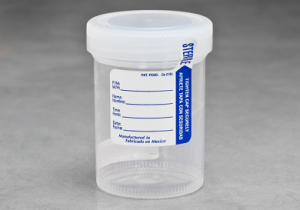For the screening recovery of Dermatophytes from the Hair, Skin and Nails
POWERCHART ORDER -Fungal Culture Hair,Skin, Nails
Useful For
This test is for the fungal culture of Dermatophytes.The class of fungi known as Dermatophytes are the most common cause of superficial mycoses (Tinea or “Ringworm”) of the skin, hair and nails. This fungal class is comprised of three genera: Trichophyton, Microsporum and Epidermophyton.
Method Name
Culture
Aliases
Fungus Culture (Skin-Hair-Nails); Dermatophyte Culture, Dermatophyte Screen
Specimen Type
- Skin, Hair or Nail scrapings or clippings, collected in a clean container or inoculated directly onto DTM slants are acceptable.
- Nails should be cut into small pieces or pulverized.
- Hair should be “plucked” and contain the base or root of the hair shaft.
- Skin should be collected as scrapings from the active margin of a lesion.
- Swabs are poor specimens for the recovery of Dermatophytes, as hyhal elements are subcutaneous and not easily sampled by surface swabbing.
Specimen Required
Skin scrapings, hair clippings or nail clippings in a clean, sealed container, envelope, or inoculate directly onto DTM culture media.

Specimen Minimum Volume
Enough specimen ( 3 small pieces) for the inoculation of the three standard fungal culture plates and a small piece for a KOH smear preparation.
Specimen Stability Information
- Transport at room temperature.
- Specimens may be received up to 72 hours after collection.
*NOTE* Specimens that do not meet the above criteria will be rejected.
Rejected Due To
- Not transported at room temperature.
- Specimens not received 72 hours after collection.
Special Instructions
- Specimens must be labeled with complete source and body site information.
- Exam includes direct smear (KOH Prep).
- Specimens are held for a 4-week incubation period. Cultures are primarily screened for the growth of Dermatophytes only (Trichophyton/Microsporum/Epidermophyton).
- The presence of other saprophytic molds and yeasts will be reported but these isolates will not be extensively identified.
- Requests for fungal susceptibility testing require submittal of the isolate(s) to a reference laboratory.
- The physician must specify the antifungal agents to be tested. Collection
- Note: Small pieces of nail material (small clippings and shavings) yield much better smear and culture results than large, thick pieces.
Performing Laboratory
Glens Falls Hospital Microbiology Laboratory
Reference Values
No Growth of Dermatophytes after 4 weeks.
Day(s) and Time(s) Performed
Read 1 time per week for 4 weeks
Analytical Time
4 weeks
Specimen Retention Time
72 hours
Analytical Time
4 weeks
